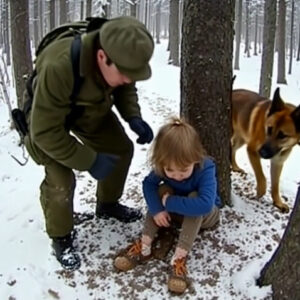Silence in Holmes County
In the summer of 1992, something unusual struck the Miller farm in Holmes County, Ohio. On the morning of July 14th, the usual clatter of buggies and chatter of children vanished. The farm was eerily still.
Neighbors noticed first. Horses remained in the barn. The smokehouse was cold. The wash line hung empty. Breakfast sat on the table—coffee half-full, bread cooling—but no one ate. Doors to the barn were unlatched, and the house was quiet as a grave.
By midmorning, word spread: Jacob and Ruth Miller and their four children—Aaron, Sarah, David, and Mary—had vanished.
A Family Without Warning
Jacob, 39, was a hardworking farmer and carpenter. Ruth, warm and kind, was known for her beautiful quilts. Their children helped with chores, walked to town, and played like any other Amish kids. Nothing hinted at trouble or danger.
Sheriff Richard Lawson arrived that afternoon. He found no signs of struggle. Beds were made. Lanterns trimmed. Bread still cooled. Jacob’s hat hung neatly on its peg.
“It looked like they just stood up and walked away,” Lawson later recalled.
Rumors swirled. Debt? An accident? A flash flood along Killbuck Creek? There were no tracks, no overturned buggies, no bodies. The family seemed to have vanished into thin air.
Two Decades of Silence
Years passed. Without electricity, phones, or bank records, the Amish left little trace. The Miller disappearance became folklore—a cautionary tale whispered at gatherings.
Then, twenty years later, a clue emerged.
The Photograph That Spoke
In 2012, at a Sunday gathering, carpenter Isaac Yoder brought an old photograph for a sermon. It showed the Millers standing in front of their red barn during the 1991 harvest. Jacob rested his arm on his son’s shoulder. Ruth held the baby. Behind them stretched the barn’s east wall.
Esther Troyer noticed something odd. “That door,” she whispered. “The wood doesn’t match.”
The barn door in the photo was lighter and newer than the rest of the wall. But the current barn showed no such difference. Something didn’t fit.
The Hidden Room
The next day, Isaac and others visited the abandoned property. They found the same east wall. The door was sealed, nailed shut, and weathered. With permission from Amish elders, investigators pried it open.
Inside, they discovered a narrow hidden room. Dust covered quilts, a child’s toy horse, and a soot-blackened oil lamp. The room smelled of age—and fear. No blood, no bones, just evidence that someone had lived there in secret.
The Debt That Drove Fear
Sheriff Lawson dug into old records. He discovered Jacob had taken out a loan from Charles Benton, a local businessman known for preying on Amish farmers. By spring 1992, Jacob defaulted. Benton appeared near the Miller property twice, one argument leaving Jacob visibly shaken. Weeks later, the family vanished.
But why build a secret room if they planned to flee?
A Witness Comes Forward
In late 2012, Margaret Stevens, an elderly neighbor from the ’90s, spoke up. She had seen a wagon along a back road in July 1992. Lanterns dimmed, figures huddled under quilts. Jacob drove the first buggy. Behind him, she believed, was Benton.
Her testimony led investigators west. Public records matched a “Joseph Miller” in Indiana in 1993. The family had lived quietly there for nearly a decade. Jacob died in 2001; Ruth later moved to a Kentucky Mennonite community.
Ruth Tells Her Story
In 2013, Ruth came forward. She explained Benton’s threats had forced them into hiding. Jacob built the hidden room to protect the family. When hiding no longer felt safe, they fled.
“We thought God would not forgive us,” Ruth said. “But Jacob said it was better to be alive and ashamed than righteous and buried.”
A Community Healed
The Amish community learned the truth. Some felt relief, others shock. The Miller farm was restored. The hidden room remained—a quiet memorial to fear, love, and survival.
It wasn’t divine mystery or dark magic. It was human: fear, pride, and survival. And it all might have stayed buried if not for one small detail—a mismatched barn door. That ordinary clue unlocked a family’s decades-long disappearance and reminded everyone that even the quietest lives may hide untold stories.





